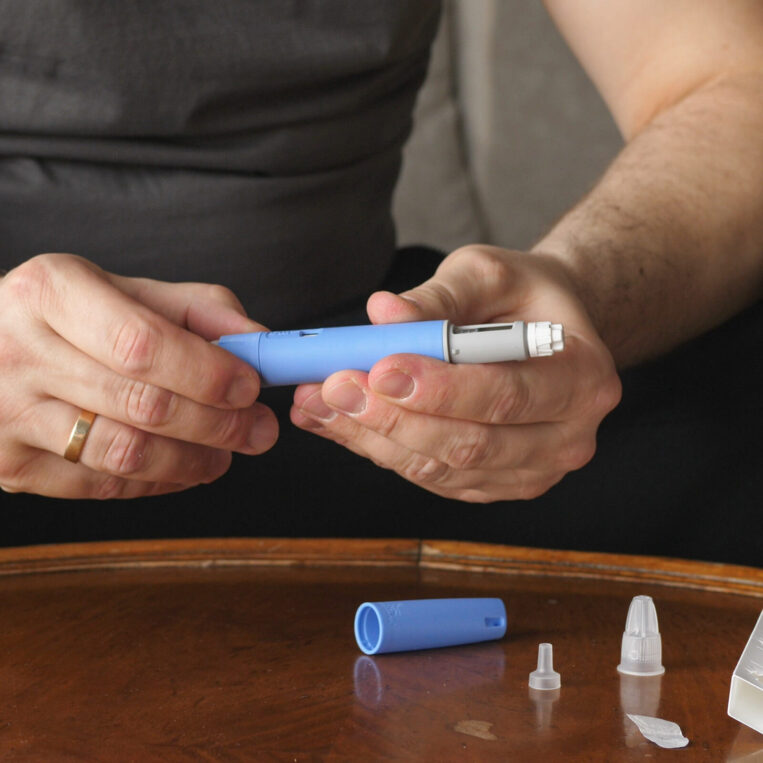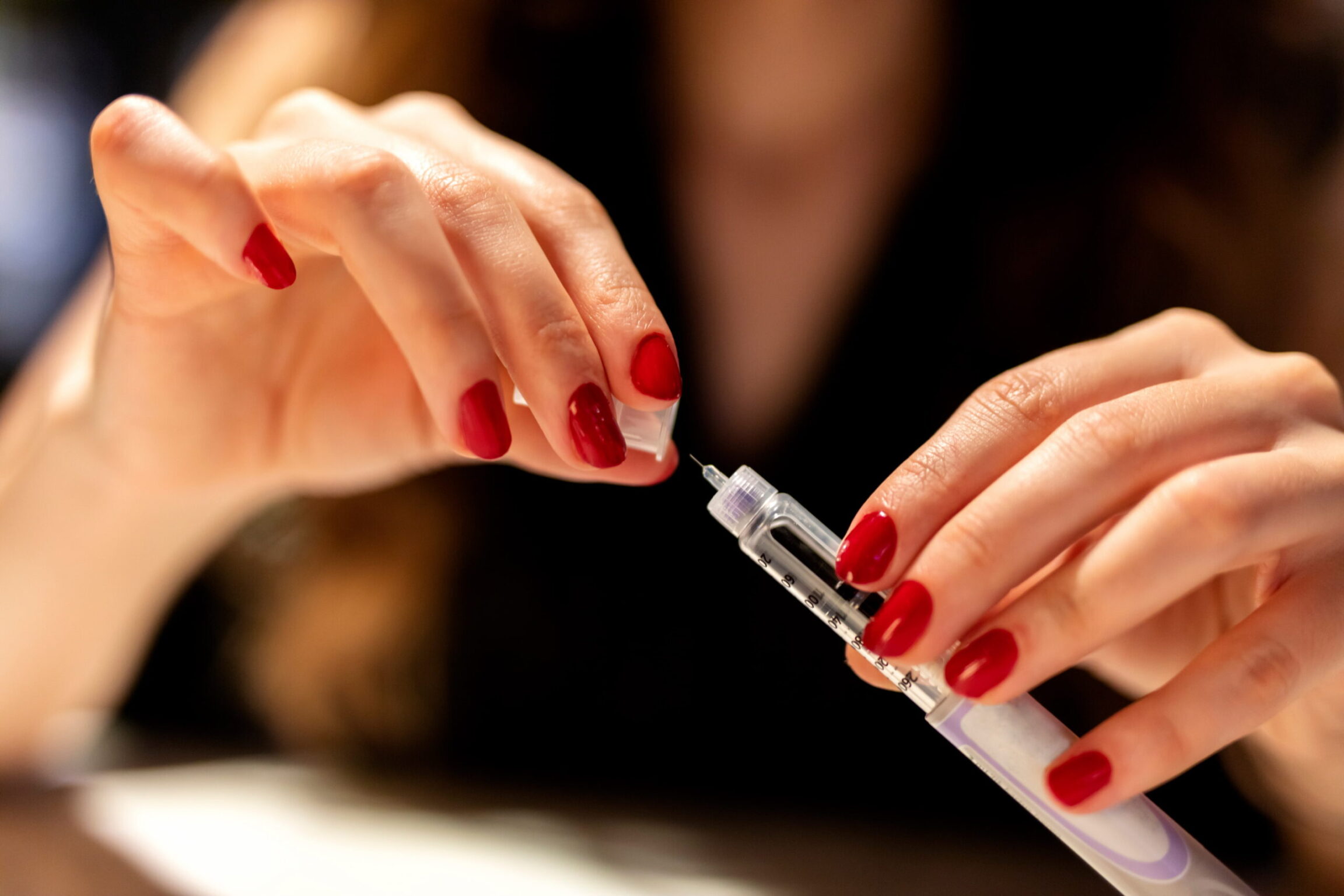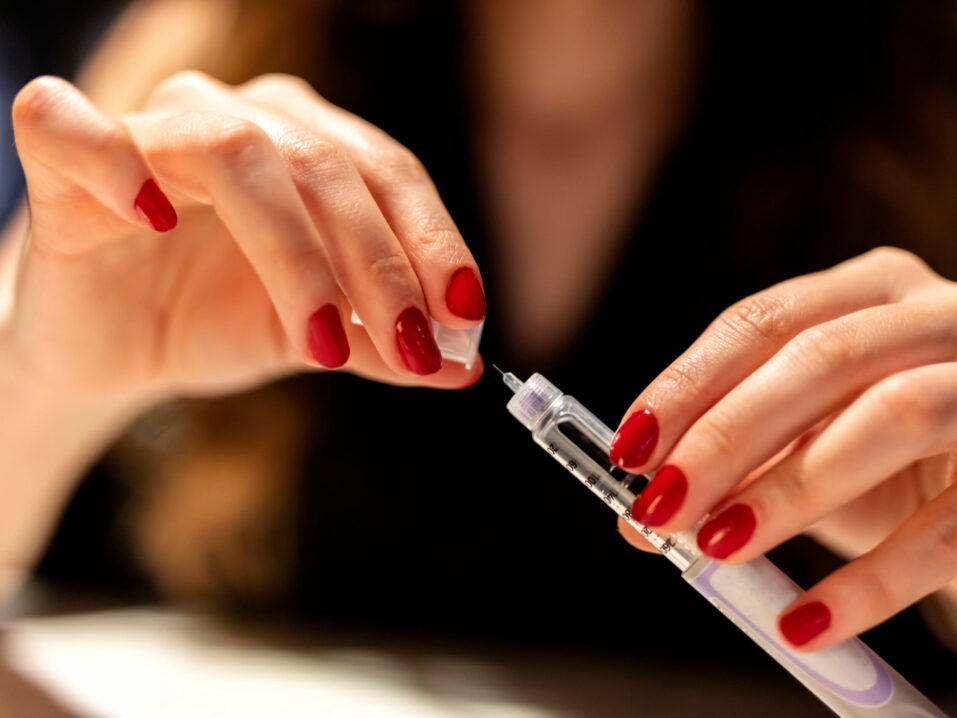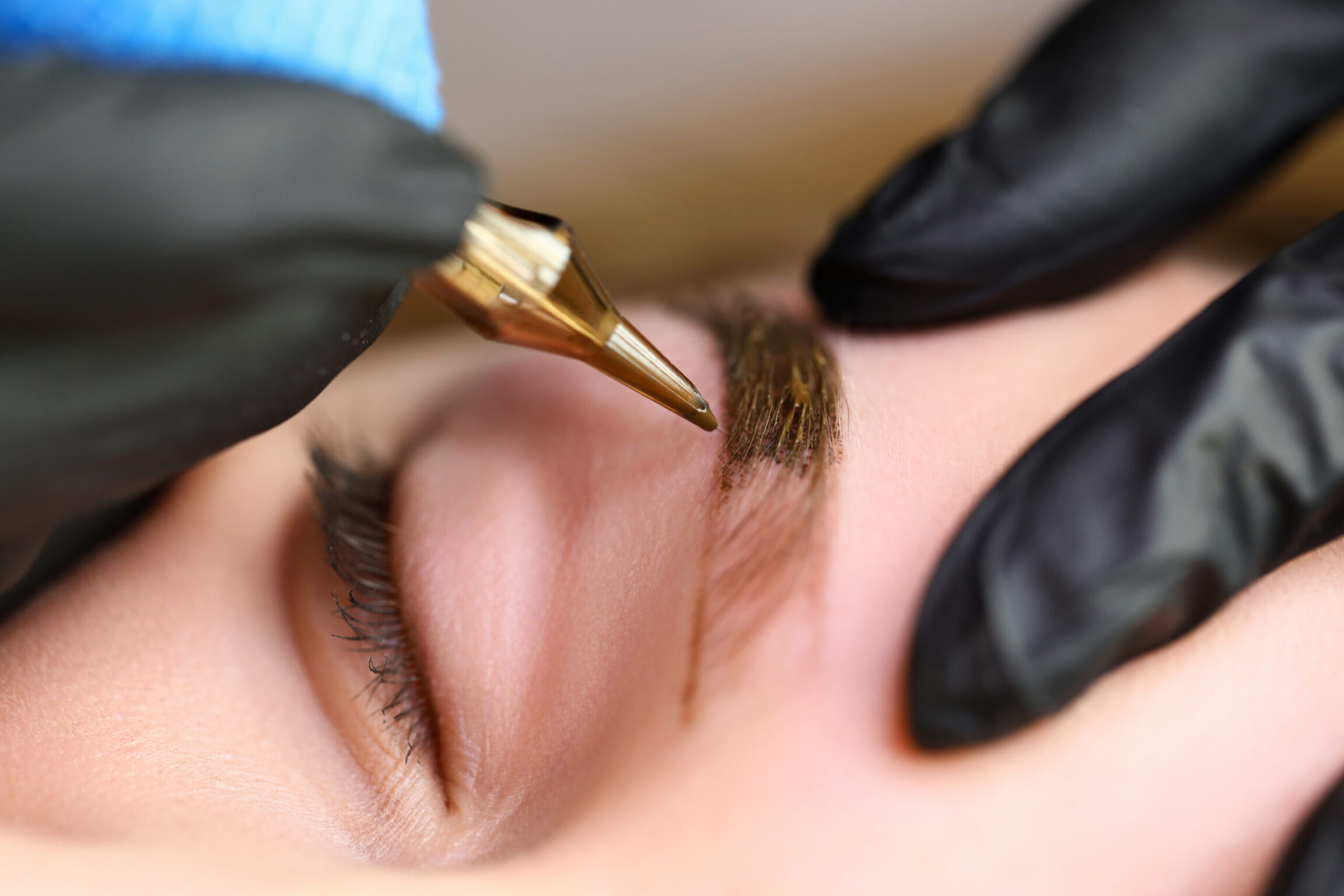What To Know About At-Home Fat Loss Injections
Ensure The Safety Of Your Injection & The Strongest Results

As a once-limited supply begins to reach the growing demand, fat loss injections are not just increasing in popularity on social media — they’re experiencing an influx of implementation with more than 6% of American adults now leveraging these medically-prescribed solutions. However, as the adoption rate increases, so does the need for greater visibility regarding best practices surrounding this ground-breaking prescription.
Using semaglutide at home can be an effective part of your weight loss journey, but it’s crucial to work closely with a healthcare professional to ensure proper dosing, minimize side effects and ensure you stay accountable to a healthy lifestyle that maximizes your results and protects your overall health.
Semaglutide Works — But Professional Guidance Is Crucial For Safety & Success
Originally prescribed to treat diabetes, semaglutide is a glucagon-like peptide-1 (GLP-1) receptor agonist that has also been approved by the US Food and Drug Administration (FDA) for weight loss. Long-term studies about its efficacy are still ongoing, but initial research has found the drug to be effective at reducing total body mass.
Additional Semaglutide Benefits Include:
- Improving heart health
- Lowering blood pressure
- Preserving kidney function
- Reducing inflammation
- Improving glycemic control
- Reducing alcohol usage and “food noise” (intrusive and disruptive thoughts about eating)

The Most Popular Semaglutide Brands Include:
- Ozempic®
- Wegovy®
- Rybelsus®
Note: Moving forward, we will use “Ozempic” and “semaglutide” interchangeably throughout this article to help address the most common patient concerns using the names most often used with each question.
Is It Safe To Do Ozempic Shots At Home?
Yes, Ozempic shots and semaglutide shots are safe to perform at home if the patient has been trained with the proper technique and aftercare protocols.
Where To Inject Ozempic:
Ozempic and other semaglutide injections can be injected under the skin in the abdomen, front of the thighs and upper arms. No evidence suggests one injection site is better than another when it comes to the efficacy of the drug.
In our experience, we have found that our patients prefer an abdomen injection and we recommend switching sides of your injection site each week.
Where NOT To Inject Ozempic:
- A muscle or vein
- Damaged skin
- Scars
- Areas that appear to be swollen
- Any area of the body that is not the abdomen, upper arms or thighs
STEP BY STEP
How To Inject Semaglutide Safely:

Step 1 — Gather Supplies
Collect all necessary supplies, including your needle/pen, alcohol swabs and a sharps container for safe disposal.
Collect all necessary supplies, including your needle/pen, alcohol swabs and a sharps container for safe disposal.

Step 2 — Wash Your Hands
Thoroughly wash your hands with soap and water to minimize the risk of infection.
Thoroughly wash your hands with soap and water to minimize the risk of infection.

Step 3 — Prepare the Injection Site
Clean the injection site with an alcohol swab to reduce the risk of infection.
Clean the injection site with an alcohol swab to reduce the risk of infection.
Step 4 (For Ozempic) — Prepare the Pen:
- Ensure the pen is clear and colorless.
- Attach a new needle by tearing off the paper tab, then pushing and turning the needle until it is on tight. Pull off both needle caps.
- Turn the dose selector until the counter shows the “flow check” symbol.
- Press and hold in the dose button until the dose counter shows “0” and make sure a drop appears at the end of the needle.
- Select your dose by turning the dose selector until it shows your recommended dose.
Step 4 (For Non-Name Brand Semaglutide Products) — Prepare The Needle
- Remove the cap.
- Push the needle barely through the top of the prescription vial and tilt the vial upside down.
- Prime the needle by dialing a small amount of medication and pressing the plunger until a drop appears at the needle tip.
- Fill the needle to the recommended dose from your healthcare professional.

Administer the Injection:
- Pinch the skin around the injection site to create a fold.
- Insert the needle at a 90-degree angle and press the needle or pen’s plunger to inject the medication.
- Hold the needle in place for a few seconds to ensure the full dose is delivered.
Dispose of the Needle or Pen:
- Gently remove the needle from the injection site and dispose of it in a sharps container.
Is it Better to Inject Ozempic in the Morning or at Night?
There is no evidence to suggest that either time of day is more effective when it comes to Ozempic injections. Timing is up to the patient and their lifestyle. As the dosage is titrated, patients may experience more intense side effects of the drug, including nausea and vomiting. Some patients prefer to manage these symptoms during the day while they are already awake instead of disrupting their sleep, making early morning an ideal time for their injection.
What Happens if I Miss an Ozempic Dose?
If you miss a dose and it is within a 5-day window of your typical injection time, take your next one as soon as possible. If you have missed your dose by more than 5 days, skip that week’s dose until your next one is scheduled.
If you miss multiple weeks in a row, we highly recommend you contact your doctor to discuss the best path forward as you may need to modify your dosage to mitigate side effects.
Consistency is crucial. We suggest patients set an ongoing phone reminder for the same day and hour for their weekly dose to ensure maximum efficacy and reduced side effects.

What Happens If I Don’t Inject Semaglutide Correctly?
The injection of any medication directly into a muscle can lead to pain, the formation of scar tissue and malabsorption of the drug. The same is true for semaglutide. Additional concerns include:
- Infection Risk: Using non-sterile equipment or failing to properly clean the injection site can increase the risk of infection. This could lead to redness, swelling or more serious complications.
- Inconsistent Dosing: Mistakes in dosing, such as administering too much or too little of the medication, can lead to inconsistent blood levels of semaglutide, potentially impacting your treatment outcomes.
- Injection Site Reactions: Poor injection technique can cause adverse reactions at the site, such as bruising, redness, or lumps, which can be uncomfortable and affect your ability to continue with the injections.
- Risk Of Bacterial Contamination: If using a vial, it is recommended that the vial only be opened for 30 days to risk of bacterial contamination. Consult with your provider if you are unsure about your prescribed vial.
Fat Loss Injections Should be Paired with Lifestyle Change & Professional Follow-Ups
Integrating regular exercise and a protein-rich diet is crucial to support long-term weight loss, prevent muscle atrophy and reduce the cosmetic effects of losing weight too fast. These lifestyle interventions not only enhance the effectiveness of the medication but also contribute to overall health and well-being.
Regular check-ins with healthcare professionals ensure that you’re on track, address any concerns and make necessary adjustments to your plan. Some healthcare practices, like ours, will also track muscle mass to ensure you are not losing muscle on the medication.

What Happens If I Lose Weight Too Fast On Ozempic?
Losing weight too quickly on Ozempic can lead to several issues, including nutritional deficiencies, muscle loss and potential gallbladder problems. Rapid weight loss may also cause fatigue, dizziness and other symptoms related to dehydration or electrolyte imbalances. Cosmetically, rapid weight loss may result in facial volume loss (sometimes referred to as “Ozempic Face”), disproportionate fat loss and loose or sagging skin, which can affect your appearance and self-confidence.
To mitigate these issues, it’s important to follow a balanced diet, stay hydrated, track your progress in a health journal and work with your healthcare provider to ensure your weight loss is gradual and managed safely. Regular check-ups can help monitor your progress and make any necessary adjustments to your treatment plan.
How Is Semaglutide Prescribed?
Semaglutide is prescribed by a healthcare provider based on an individual’s health needs and weight loss goals. For weight loss, it is typically recommended for patients who are obese (with a BMI of 30 or higher) or overweight (BMI of 27 or higher) with additional weight-related conditions such as high blood pressure or high cholesterol. During a consultation, the provider assesses factors like medical history, current health status, and potential medication interactions to determine the appropriate dosage and administration schedule.

Depending on the patient’s specific circumstances and the practice’s protocols, they may receive either a name-brand solution or a generic prescription from a compounding pharmacy. The provider will guide the patient on the proper injection technique and schedule, ensuring the treatment aligns with their weight loss goals and overall health plan.
A Word About Semaglutide Compounding Pharmacies
When considering receiving your semaglutide prescription from a compounding pharmacy, the supplier vetting process is crucial for ensuring quality and safety. It’s important to ask your provider about their recommended compounding pharmacy, including why they selected them, how long they’ve been working with them, and whether there have been any issues with supply in the past.
A reputable pharmacy should offer a prescription solution that is as safe and effective as the name-brand options. Going this route reinforces the patient’s need to follow proper injection protocols, adopt optimized lifestyle changes and adhere to the personalized advice of their healthcare professional to ensure safety and ideal results.
Note: While we offer semaglutide as a weight loss solution at our practice, we do so only as a component of a complete functional medicine program.
About The Author
Marguerite Weston, MD-IFMCP, is a world-class functional medicine doctor in Columbus, Ohio. Throughout her tenure, she has helped countless patients discover the root causes of their health concerns and presented treatment solutions that are safe, effective and suitable to their unique lifestyle. Dr. Weston curates personalized weight loss programs for her patients, which often include the use of semaglutide to aid in the process — in addition to lifestyle interventions and nutrition education.

Related Articles

Read More Lower Blood Pressure Naturally
Lower Blood Pressure Naturally
Hypertension can limit fertility, restrict surgery options & shorten life expectancy. These lifestyle interventions can help lower your blood pressure naturally!

Read More Functional Medicine Dietitian vs. Conventional Dietitian
Functional Medicine Dietitian vs. Conventional Dietitian
While both disciplines are vital for a healthy society, Functional Medicine Dietitians are often preferred when treating chronic illness using nutrition care.

Read More How To Inject Semaglutide At Home
How To Inject Semaglutide At Home
Our comprehensive, step-by-step guide to safely & effectively injecting compounded semaglutide at home.













